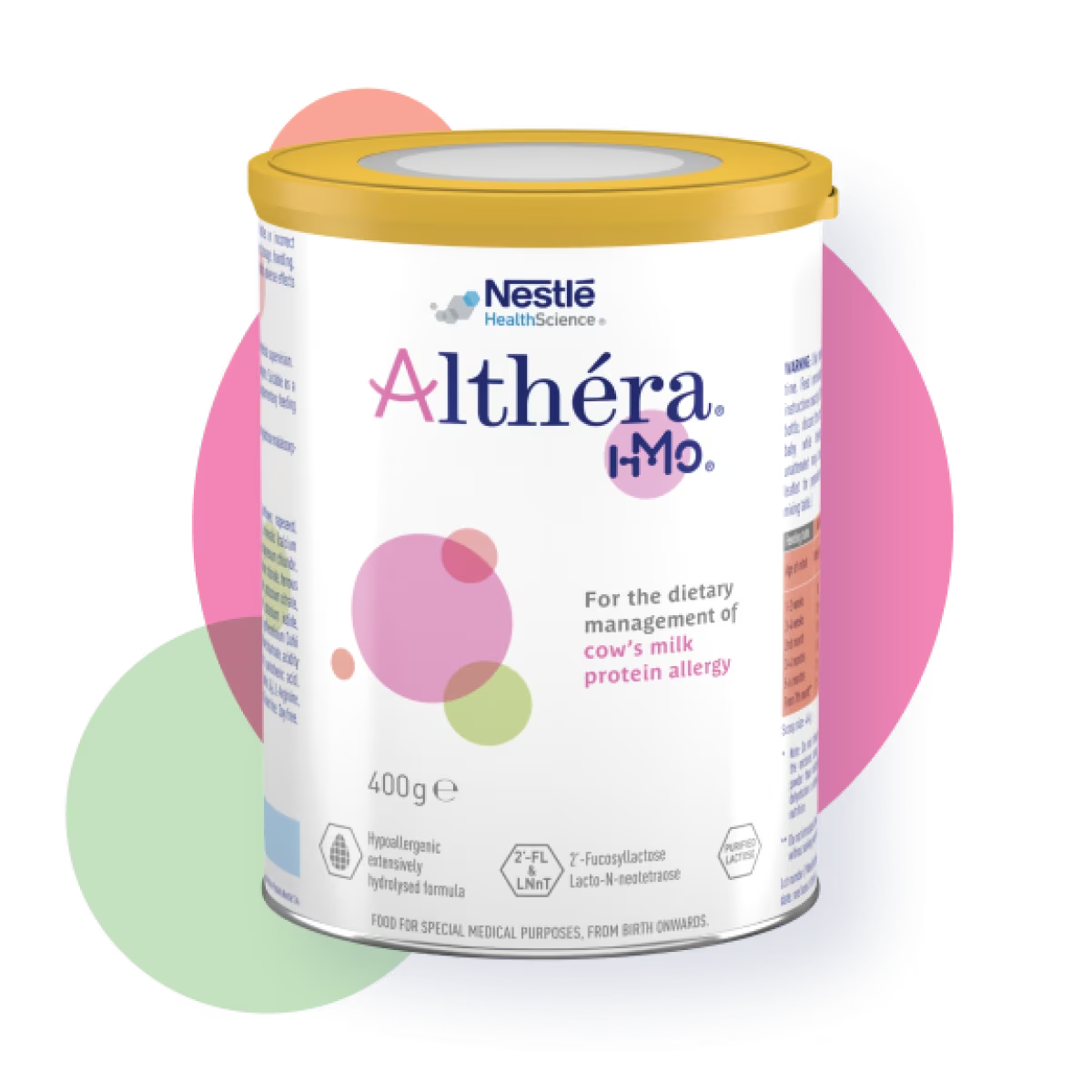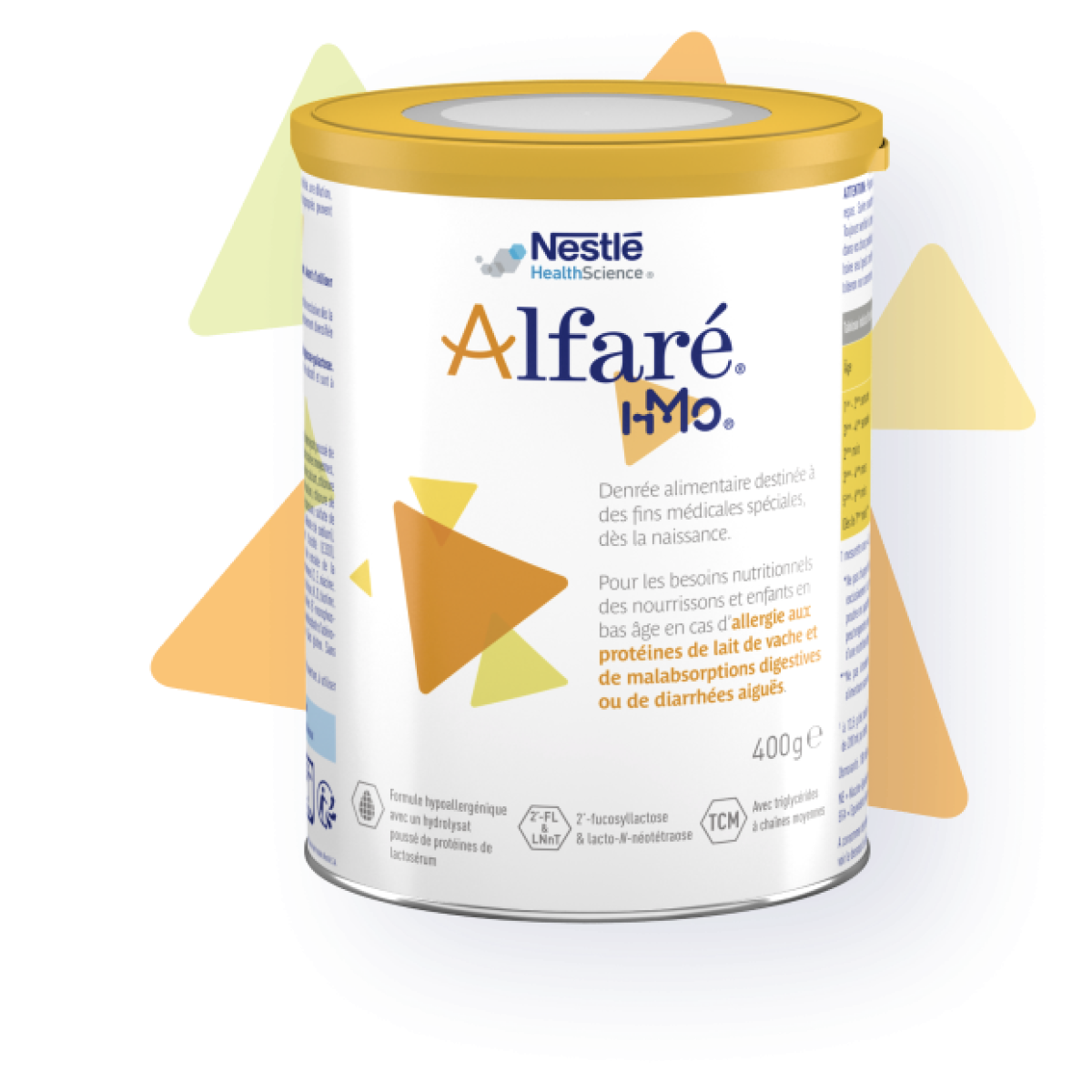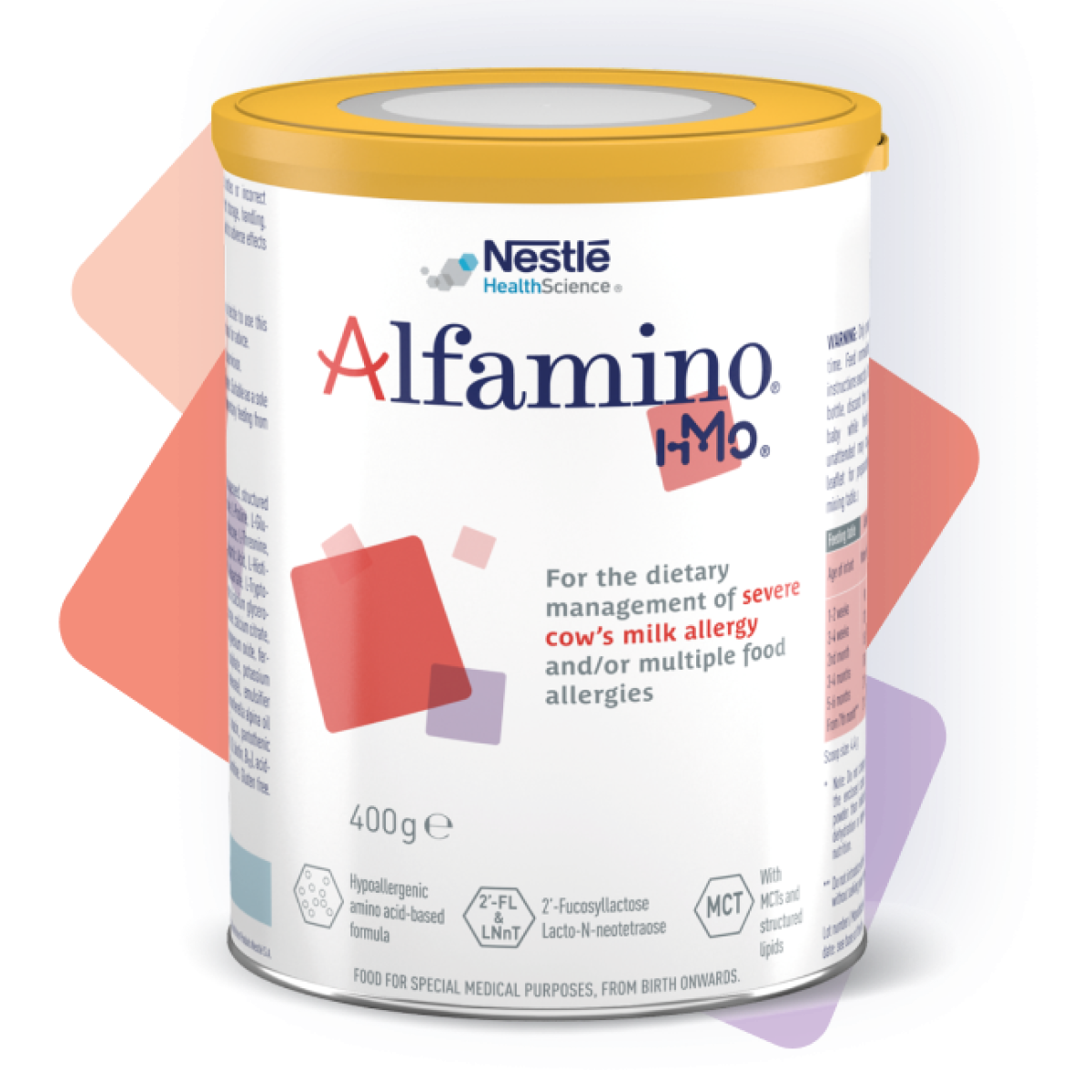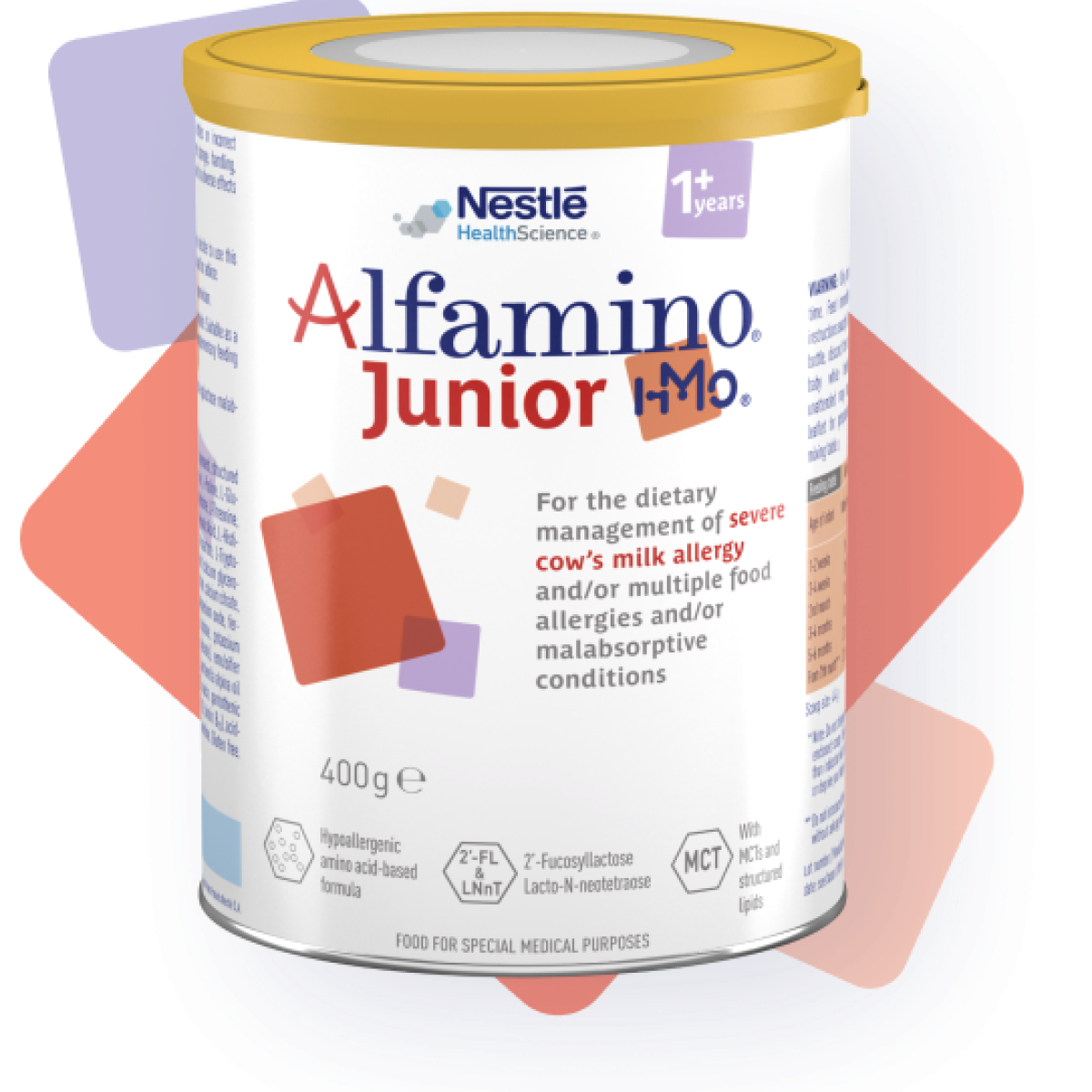Formula-Feeding in Cow's Milk Protein Allergy
If a healthcare provider has diagnosed your baby with CMPA and breastfeeding is not possible, then they will advise on a suitable alternative formula.*
Breastmilk will always remain the best source of nutrition for all babies.
*Food for Special Medical Purposes to be used under medical supervision.Hypoallergenic
Formula
Babies with CMPA who are not exclusively breastfed will need a suitable alternative formula to ensure they receive all the nutrients required for growth and development. These are called hypoallergenic formulas, meaning that they are designed to be less likely to cause allergic reactions.
There are two types of hypoallergenic formulas, the first being extensively hydrolyzed containing very small chains of proteins that are not recognized by your baby’s immune system, of animal or plant-based protein sources. The second type is amino acid based formulas, with highly broken-down proteins i.e., into individual units called free amino acids. For the majority of babies, the extensively hydrolysed formula (EHF) is most suitable. Only in severe cases of CMPA is the free amino acid-based formulas (AAF) used. Your healthcare provider will advise which hypoallergenic formula is most suitable for your baby.
Understanding CMPA and
hypoallergenic Formulas
The Development of
Hypoallergenic Formulas
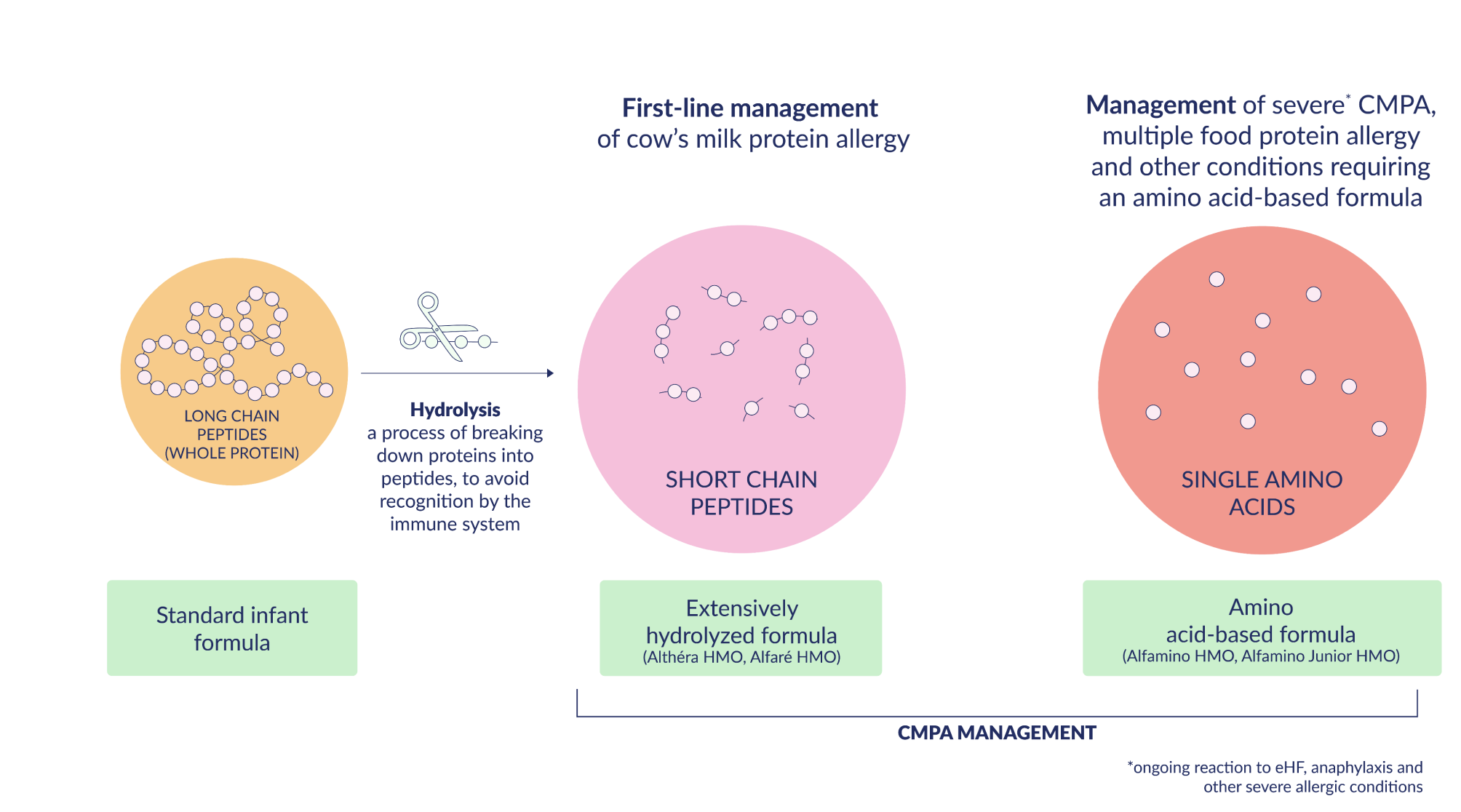
INDICATIONS
Extensively hydrolyzed formula (eHF) for infants and young children with cow’s milk protein allergy (CMPA).
From birth onwards.
Extensively hydrolyzed formula (eHF) for infants & young children with digestive problems related to CMPA.
From birth onwards.
Amino Acid based formula (AAF) for infants and young children with severe forms of cow’s milk protein allergy (CMPA), multiple-food protein allergy (MFPA).
From birth onwards.
Amino Acid based formula (AAF) for young child formula for those with severe forms of cow’s milk protein allergy (CMPA), multiple-food protein allergy (MFPA).
From 12 months to 13 years.

AN EYE ON A SUSTAINABLE FUTURE
On average, at least 69% of the plastic in our product lids and scoop combined are now made from plant-based materials.
